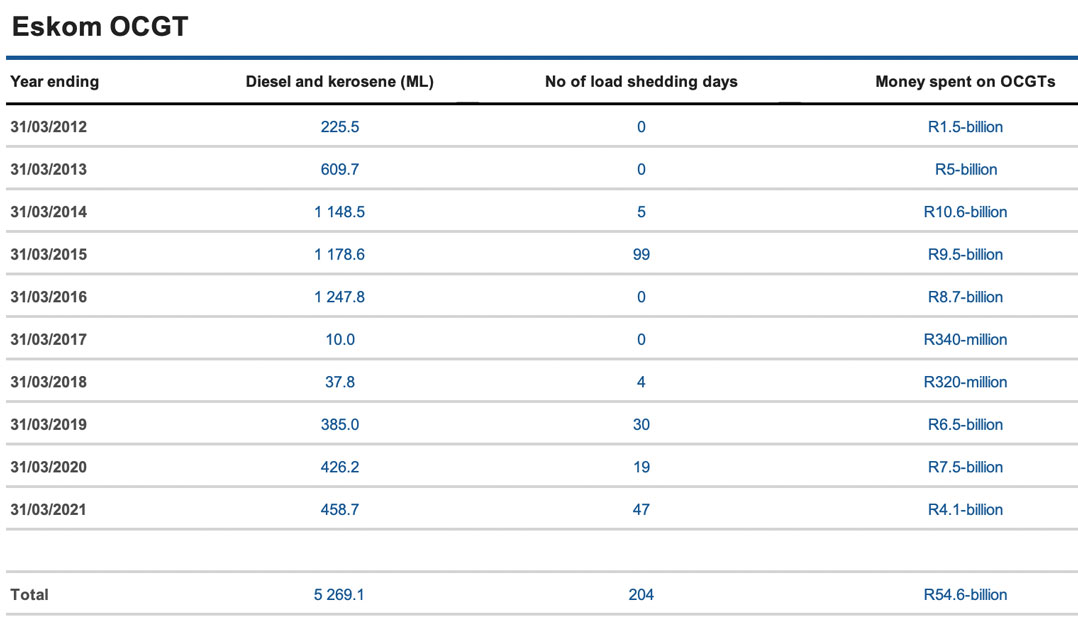
Eskom burned through more than 5.7 billion litres of diesel and kerosene in the past decade as it fought in vain to keep the lights on South Africa.
The stunning quantity of fuel, based on calculations done by TechCentral after studying the utility’s annual reports, was consumed in open-cycle gas turbines (OCGTs). Eskom uses these turbines to supplement electricity generation when it can’t meet demand from its ageing coal fleet and from the Koeberg nuclear power station.
Load shedding has plagued South Africa almost every year since 2008, except for 2012, 2013, 2016 and 2017. Since 2012, there have been 204 days of load shedding.
Publicly available data on the Eskom website, which TechCentral has interrogated, shows that the power utility used a total of 5.728 billion litres of diesel and kerosene since 2012 to power its OCGTs and those of independent power producers (IPPs), with which it supply contracts.
To put this in context, the amount of diesel used to power the OCGTs could fill about 22 000 Olympic-sized swimming pools and about 85 million Ford Ranger XLT bakkies (assuming a fuel tank size of 68l).
In 2016 alone, when Eskom burned through the most diesel in a single year, the fuel it used could have filled more than two million buses (with a tank size of 600l).
Diesel used by the power utility fluctuates markedly depending on when the OCGTs are needed and how long they are used to supplement Eskom’s generating capacity. Although the power utility insists that the OCGTs are only used during peak hours when demand is higher, it’s obvious from studying the utility’s annual reports that in past years it used them even when demand was low.
R54-billion
In 2016, there was no load shedding and that continued into the 2017 financial year. However, in those two years over R9-billion was used to run the gas turbines. This was when Brian Molefe was CEO of the utility and load shedding almost became but a memory for South African consumers.
In total, Eskom has spent more than R54-billion on the OCGTs since 2012, excluding those provided by the IPPs. In its interim results for the 2022 financial year (the six months to September 2021) – the latest available from the utility – Eskom said it spent R2.5-billion on diesel in the OCGTs.
Eskom chief operating officer Jan Oberholzer told the media in March that the turbines cost about R700 000/hour to run each. Since then, diesel prices have soared, meaning the cost per turbine is more likely now about R800 000/hour.

AT a recent media briefing, Oberholzer said Eskom could spend as much as R15-billion on diesel in the financial year to March 2023.
South Africa needs an extra 4-6GW of generating capacity to eliminate the risk of load shedding in the near term, Eskom has said on numerous occasions. Oberholzer this week reiterated this point, and pleaded for an end of talk shops and for an urgent start to building new generation capacity if South Africa is to avoid a long-term crippling electricity supply crisis. – © 2022 NewsCentral Media

